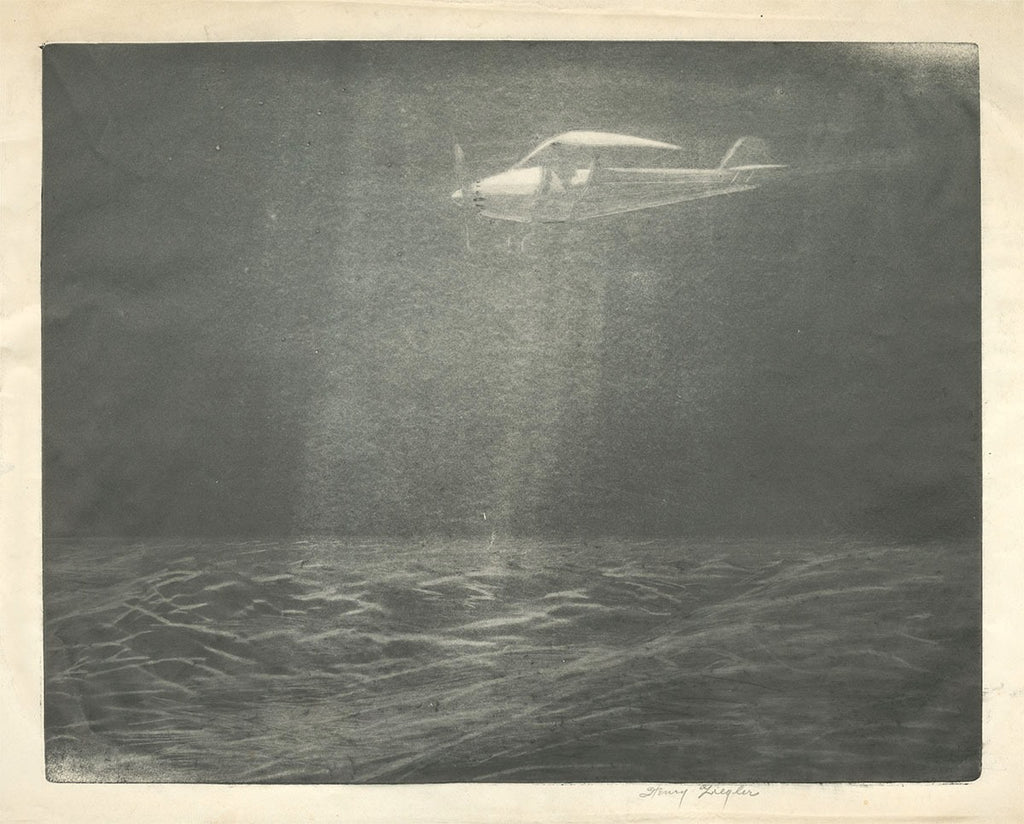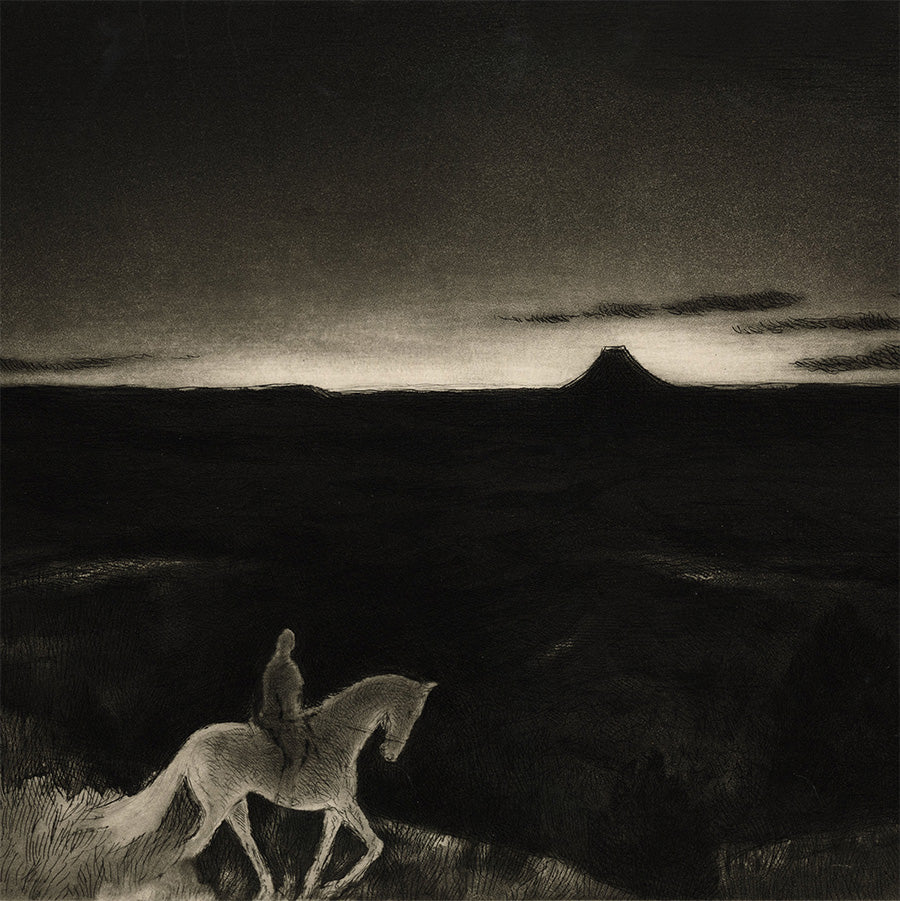 Sold
Sold
Night Flight
ZIEGLER, Henry
Aquatint, burnisher and drypoint on wove paper, c. 1925.Artist’s proof, aside from an unknown edition; if one was actually printed, which is doubtf...
View full detailsWhile printmakers have always wanted to present some shading or grayscale in their work, until the discovery of aquatint in the 17th century, doing so was technically very challenging. And with a few notable exceptions, such as in the etchings of Francisco Goya, aquatint, this most painterly of intaglio techniques, remained unpracticed by most printmakers. Aquatint started to gain popularity in the latter part of the 19th century, likely as etching was being rediscovered by Impressionists. These artists were often eager to replicate in their prints the atmospheric qualities found in their paintings. Aquatint, with its granular texture, lends itself to effects that offer an endless range of shading, both in black and white and in color. Because it was practiced so masterfully by artists of the Modern Era, we here at Armstrong Fine Art are true “suckers” for a finely crafted aquatint. Here are a few we have, or have had in the past.
 Sold
Sold
Aquatint, burnisher and drypoint on wove paper, c. 1925.Artist’s proof, aside from an unknown edition; if one was actually printed, which is doubtf...
View full details Sold
Sold
Aquatint, etching, and drypoint on Arches wove paper.Reference: Sanchez 517.Edition of 50.Compared to another version of this print, titled “Riders...
View full details
Le Grand-Prix de Paris (original French title) Color etching, aquatint, and drypoint printed on simili-japon paper, 1906.Ref: Delteil 74.Edition of...
View full detailsPlease sign up for our newsletter
Email: info@armstrongfineart.com
Phone: 773-887-6776
1200 West 35th Street, #186
Chicago, IL 60609
Copyright © 2025 Armstrong Fine Art.
Development by Alo Agency. Powered by Shopify
